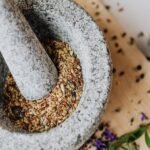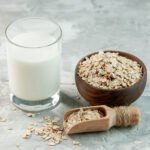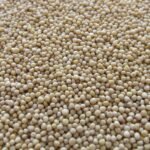From Farm to Fork: The Untold Story of Butter
Let’s embark on a luscious journey, shall we? The star of our show today is butter. This golden, creamy delight has been gracing our bread and jazzing up our cooking for centuries. But there’s more to butter than its delicious taste and silky texture.
A Dip in History: The Roots of Butter
Can you believe that the history of butter churns its way back over 4,000 years? That’s right! Ancient civilizations, such as those in India and the Middle East, produced butter not just for food, but also as a medicinal and cosmetic product.
From these humble beginnings, butter has spread its influence worldwide. It has entrenched itself as a staple in kitchens around the globe, adding a touch of luxury to everyday dishes.
Spread it, Melt it, Sauté with it: The Culinary Versatility of Butter
Butter, dear friends, is not just a topping for your toast. It’s a culinary dynamo with countless uses. Here are just a few ways you can make butter the hero of your dish:
- Baking: It provides moisture, richness, and flavor to baked goods like cakes and cookies.
- Cooking: It’s excellent for sautéing and frying, and it can create delectable sauces.
- Spreading: Let’s not forget the simplest pleasure of all—spread on warm bread, it’s a heavenly treat!

Butter is an unsung hero in the kitchen, ready to transform any meal from mundane to memorable.
Melting Down the Nutritional Profile of Butter
Yes, butter is fat. But that’s not the whole story. When used in moderation, it offers some notable nutritional benefits. Let’s peel back the butter wrapper and take a peek:
| Nutrient | Value per 100g |
|---|---|
| Calories | 717 kcal |
| Fat | 81 g |
| Protein | 0.85 g |
| Carbohydrates | 0.06 g |
| Vitamin A | 684 IU |
| Vitamin E | 2.32 mg |
| Vitamin K | 7 µg |
Note that butter is high in saturated fat, so it’s best to use it sparingly. But it’s also a good source of fat-soluble vitamins like A, E, and K, which play key roles in vision, immunity, and blood clotting, respectively.
Frequently Asked Questions
1. Is butter bad for my health?
Well, that’s a sticky question! Butter is high in saturated fat, which can raise LDL (bad) cholesterol levels if consumed in excess. However, it also provides important nutrients. So like many things in life, it’s all about balance!
2. Can I use butter in all types of cooking?
Oh, absolutely! Butter is incredibly versatile. Whether you’re baking, sautéing, frying, or spreading, butter can elevate your dish. Just be mindful of its smoking point, which is lower than some other fats, like olive oil.
3. Is butter the same as margarine?
No siree! While both can be used in similar ways, butter is a natural product made from animal milk, whereas margarine is a processed product made from vegetable oils. They have different flavors and nutritional profiles, too.
The Final Spread
Butter is more than a mere kitchen staple—it’s a golden thread weaving through culinary history, versatile cooking applications, and a surprising nutritional profile. By understanding and appreciating its value, we can use butter to enhance our meals and nourish our bodies.
So next time you’re sizzling veggies in a pat of butter or spreading it on a crusty piece of bread, remember—you’re not just eating, you’re partaking in a millennia-old tradition of enjoyment and nutrition!
Fun Facts
- The average American consumes 5.6 pounds of butter per year.
- Butter carving is an actual art form, with competitions held at state fairs.
- Napoleon III offered a prize for anyone who could produce a satisfactory substitute for butter, leading to the invention of margarine.
Source: Healthline




